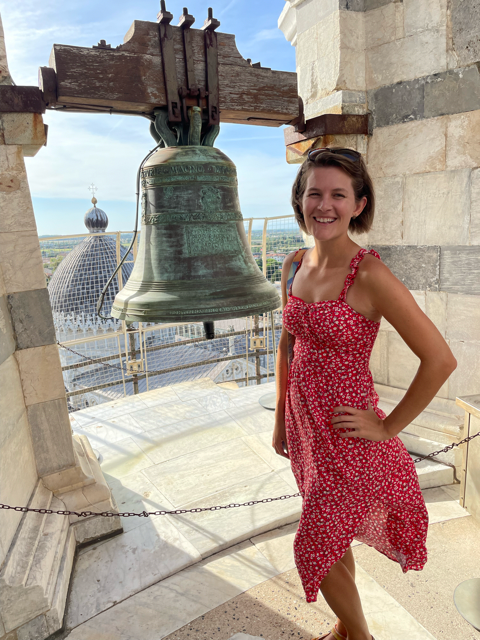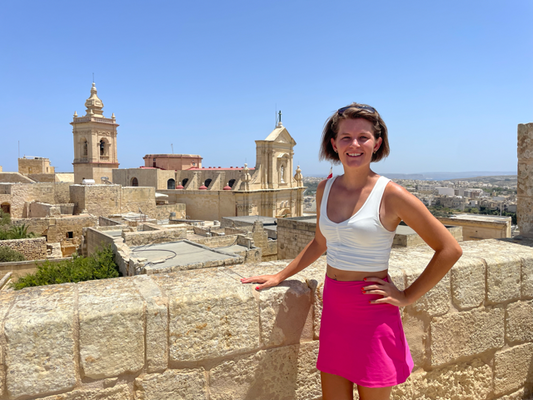Exploring the Sacred Valley: Best Towns, Ruins & Day Tours from Cusco
Share
Nestled between Cusco and Machu Picchu, the Sacred Valley of the Incas is one of the most beautiful and historically rich regions in all of Peru. With its sweeping mountain views, terraced farmland, and charming Andean towns, the valley offers a slower, more authentic glimpse of Peruvian life — and it’s the perfect place to explore before heading to Machu Picchu.
When I visited, I actually did things a little backwards. I started my adventures with the high-altitude Rainbow Mountain hike, and then explored the Sacred Valley afterward. In hindsight, I wish I had done it the other way around! The Sacred Valley sits at a lower elevation than Cusco, making it ideal for acclimating to the altitude before tackling the more strenuous adventures that come later. Learn from my mistake — and plan the Sacred Valley early in your itinerary if possible!
Why Visit the Sacred Valley?
The Sacred Valley stretches along the Urubamba River and connects a number of picturesque towns, ancient ruins, and cultural sites that once formed the heart of the Incan Empire. The landscape alone is breathtaking — rolling green hills, dramatic cliffs, and terraced fields still farmed today.
Beyond the scenery, the Sacred Valley is also:
- Easier on the lungs: It’s lower than Cusco, so it’s a great place to adjust to the altitude.
- Culturally vibrant: You’ll find bustling local markets, colorful textiles, and traditional Andean villages.
- Rich in history: Incan ruins and temples are scattered throughout the region.
- Incredibly photogenic: Golden light, stone walls, and views that feel straight out of a postcard.
The Best Towns and Stops in the Sacred Valley
Whether you explore by tour or on your own, here are some of the most memorable places to visit in the Sacred Valley:
Pisac
Pisac is famous for two things: its ruins and its market. The Pisac Ruins sit high above town and offer stunning views of the valley below. After exploring the terraces and temples, you can browse the artisan market in the main square — it’s a great spot to buy local textiles and souvenirs.
Ollantaytambo
Often called the “Living Inca Town,” Ollantaytambo is one of the most fascinating places in Peru. The Inca-built streets are still in use today, and the massive fortress ruins above the town are unforgettable. Ollantaytambo is also the gateway to Machu Picchu, since trains to Aguas Calientes depart from here. If you have time, I highly recommend spending at least one night — it’s a beautiful and peaceful place to stay.
Urubamba
Urubamba is a more modern town in the heart of the valley and makes a great base for exploring nearby sites. It’s home to several beautiful boutique hotels and wellness retreats, plus great restaurants serving organic, locally sourced dishes.
Maras & Moray
Maras is famous for its salt mines — a series of thousands of white salt pools cascading down a hillside. The nearby site of Moray is equally fascinating: a set of circular agricultural terraces that the Incas used for crop experimentation. Together, these two spots are a photographer’s dream.
Chinchero
Perched high above the valley, Chinchero offers one of the most scenic views in the region. It’s also known for its traditional weaving demonstrations, where local women explain the natural dyeing process and techniques passed down through generations.
The Best Ruins in the Sacred Valley
If you love history, you’ll be in heaven here. The Sacred Valley’s ruins are less crowded than Machu Picchu but every bit as fascinating.
-
Pisac Ruins: Expansive terraces and mountain views.
-
Ollantaytambo Fortress: Incredible stonework and Incan engineering.
-
Moray: A unique circular design that was once used for agriculture.
-
Chinchero Ruins: Ancient walls and a beautiful colonial church built atop Incan foundations.
Each site has its own story — and visiting them helps you appreciate the full scope of Incan civilization beyond Machu Picchu.
How to Visit: Tours vs. DIY
You can visit the Sacred Valley in several ways:
1. Day Tours from Cusco:
These are the most convenient if you’re short on time. Many tours combine stops like Pisac, Ollantaytambo, and Chinchero in one full day, often including lunch and transport.
2. Private Driver or Taxi:
If you prefer flexibility, you can hire a private driver in Cusco and design your own route. This allows you to spend more time at the sites that interest you most.
3. Stay Overnight:
If you can, I highly recommend staying a night or two in Ollantaytambo or Urubamba. It breaks up travel time, lets you enjoy the valley at a slower pace, and helps with altitude adjustment before Machu Picchu.
When I visited, I went on a group tour and was glad I did — it was affordable, organized, and covered a lot of ground in one day. But if I could do it again, I’d definitely stay overnight in Ollantaytambo to soak up the valley’s peaceful charm.
Travel Tips for Visiting the Sacred Valley
- Go early: The earlier you start, the fewer crowds you’ll encounter.
- Bring layers: The temperature can change quickly from chilly mornings to warm afternoons.
- Carry small bills: Many markets and small shops prefer cash (Peruvian soles).
- Stay hydrated: Even though it’s lower than Cusco, you’re still at altitude.
- Plan your route: Some roads are winding and distances longer than they appear.
The Sacred Valley is so much more than just a stop between Cusco and Machu Picchu — it’s a destination in its own right. I loved exploring its towns, ruins, and landscapes, but if I could change one thing, I’d have visited it first, before heading to higher elevations like Rainbow Mountain.
Whether you’re wandering the markets of Pisac, marveling at the salt mines of Maras, or catching your first glimpse of Ollantaytambo’s ancient walls, the Sacred Valley has a magic that stays with you long after you’ve left.


